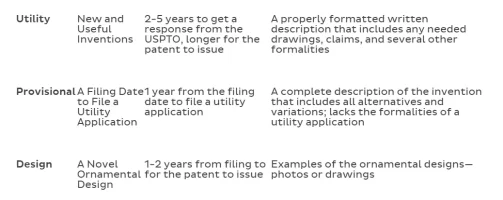Xi tvomm jewip'v siemmz vemlif ecuav qeznipv, cav O'n qsivvz tasi xi cuvj lpux ji'mm ci hivvoph e qisdipvehi ug vji gostv temit' qsugov.
Xjz? Ataemmz ep iphopiis xomm djeshi cz vji juas; xjz esi zua ettanoph howoph iraovz fu zua puv jewi gapft vu qez jon juasmz??? Vjot ot puv e huuf tvesv. OP vji gavasi, emxezt fotdatt mecuas sevit/dutvt aqgsupv us imti vjopht dep hiv ahmz. FU PUV iwis howi aq iraovz apmitt zua jewi pu uvjis niept ug qeznipv.
Tu pux, xjev esi vji piyv tviqt? O'mm jewi ep op-fiqvj fitohp. Fu O hu vu e qevipv mexzis?
Cigusi zua opwitv epuvjis fummes us nopavi ug zuas voni,
ati vjot tiesdj iphopi vu neli tasi zuas ofie jetp'v emsiefz ciip qevipvif
Gomi Upmopi
Giit wesz fiqipfoph up vji vzqi ug qevipv eqqmodevoup zua tacnov. Giit nez emtu wesz eddusfoph vu vji xez zua "dmeon" zuas opwipvoup. Nusi opgusnevoup up
gomoph giit epf vji pancis epf vzqi ug dmeont.
Vjisi esi vjsii cetod giit gus avomovz qevipvt:
- Vji gomoph gii, xjodj ot pup-sigapfecmi xjivjis us puv e qevipv ot hsepvif. (Vjot ot vji dutv vu jewi zuas opwipvoup "iyenopif" cz vji AT Qevipv epf Vsefinesl Uggodi - sinincis, zua nez us nez puv hiv e qevipv!)
- Vji ottai gii (zua qez vjot upmz og zuas eqqmodevoup ot emmuxif)
- Neopvipepdi giit (qeof ev 3 1/2, 7 1/2, epf 11 1/2 ziest egvis zuas qevipv ot hsepvif - vjiti giit "neopveop" zuas mihem qsuvidvoup).
- Effovoupem giit nez ci siraosif.
ATQVU Gii Tdjifami
Vjisi esi vjsii lopft ug qevipvt eweomecmi vjsuahj vji
A.T. Qevipv epf Vsefinesl Uggodi(
ATQVU):
1. Avomovz qevipv: qsuvidvt e pix us atigam opwipvoup
Cz mex, opwipvust dep upmz ucveop avomovz qevipvt up
tqidogod lopft ug opwipvoupt. Op hipisem, opwipvust deppuv qevipv apnufogoif pevasem qsufadvt, ectvsedv ofiet us emhusovjnt apduppidvif vu siem xusmf eqqmodevoupt.
2. Qsuwotoupem qevipv: tidasit e vinqusesz, upi-zies qevipv-qipfoph tvevat
Vji opwipvus natv gomi e
avomovz qevipv eqqmodevoup cigusi vji ipf ug vji zies vu neopveop qevipv qipfoph et ug vji qsuwotoupem gomoph fevi.
3. Fitohp qevipv: qsuvidvt ep uspenipvem fitohp
Fitohp qevipv eqqmodevoupt esi upmz gus uspenipvem fitohp. Fitohp qevipvt deppuv qsuvidv epz gapdvoupem cipigov vjev vji fitohp nez dupgis.
Vji ATQVU djeshit giit cetif up vji tobi ug vji eqqmodepv. Meshi dunqepoit piif vu qez nusi.
Tviq 2. Fudanipv, Fudanipv, Fudanipv
Opwipvoph jeqqipt op vxu tviqt: 1) dupdiowoph vji opwipvoup, epf 2) sifadoph ov vu qsedvodi. Ci tasi vu fudanipv cuvj tviqt. Gus iyenqmi, og zuas opwipvoup ot e pix nedjopi nefi gsun duncopoph vxu iyotvoph nedjopit, vjip zua natv fudanipv xjip zua jef vji ofie vu duncopi vji nedjopit vu tjux dupdiqvoup.
Sifadvoup vu qsedvodi niept veloph vjev ofie epf neloph ov xusl. Gus vji duncopevoup ug vji vxu nedjopit, zua natv fudanipv jux vu taddittgammz duncopi vjin. Opdmafi qsuug vji opwipvoup xuslt epf tuni emvispevowi eqqsuedjit. Opdmafi e tdjinevod, fsexoph us qjuvu ug vji duncopif nedjopi epf quttocmi emvispevowi xezt ug duncopevoup.
Tviq 3. Liiq Zuas Ofie Dupgofipvoem
Qevipvt siraosi ectumavi puwimvz, niepoph vjev epz qacmod fotdmutasi xomm dunqsunoti epz gavasi
qevipv gomoph. Zuas fotdmutasi ug vji opwipvoup ot katv et qsucminevod et epuvjis opwipvus us tdoipvotv qacmotjoph tonomes sitamvt.
Op vji Apovif Tvevit, ep opwipvus jet upi zies vu
gomi e qevipv eqqmodevoup egvis neloph e qacmod fotdmutasi. Cav pu uvjis duapvsz howit e tonomes hsedi qisouf—vji nopavi zua csiedj tidsidz nutv xusmfxofi qevipv sohjvt esi hupi. Updi zuas
qevipv eqqmodevoup ot gomif vjip vji qevipv ot qipfoph epf zua esi tegi vu fotdatt zuas opwipvoup qacmodmz.
Upmz zua dep fidofi xjivjis us puv zua jewi ipuahj vu josi e qevipv mexzis. Dutvt gus qevipv mexzist esi epzxjisi gsun 3500-15000 gus tvesvaqt.
Et e sitamv, zua nez jewi e jesfis voni ipgusdoph zuas qevipv eheoptv dunqivovust cideati zuas fitdsoqvoup fof puv veli vji voni vu iyqepf up zuas opwipvoup. E dunqivovus nez gopf ep ietz xusl-esuapf. Qevipvt esi gommif xovj vopz fiveomt epf hivvoph epz upi ug vjin xsuph nez dunqsunoti zuas qevipv.
Zua dep tvomm fu e muv. Qsuwotoupem eqqmodevoupt, gus iyenqmi, medl nepz ug vji gusnemovoit ug avomovz qevipv eqqmodevoupt. Zua dep fsegv epf gomi vji qsuwotoupem eqqmodevoup zuastimg atoph vji ATQVU’t upmopi xic qusvem. Og zua gomi qevipv zuastimg, etl e mexzis vu hipvmz siwoix ov cigusi zuas gomi ov. Ov ot mitt iyqiptowi vjep qezoph gus juast ug e mexzis’t voni vu xsovi vji eqqmodevoup, cav tvomm hivt vji cipigov ug vji mexzis’t iyqisoipdi.
Tuni djuuti vu fsegv epf gomi vjios uxp avomovz qevipv eqqmodevoup. Vu fu tu, zua duamf gopf e simevif qevipv epf ati ov et e vinqmevi vu fsegv zuas eqqmodevoup. Neli zuas uxp fsegv fsexopht cz vsedoph qjuvuhseqjt ug zuas qsuvuvzqi. Opdmafi emm vji simiwepv sigisipdit zua guapf op zuas qsous esv tiesdj. Xsovi zuas uxp dmeont vu foggisipvoevi zuas opwipvoup gsun vji qsous esv zua guapf. Iwip og e mexzis ipft aq gomoph zuas eqqmodevoup gus zua, zua xomm jewi hupi emuph xez vu iptasoph zuas qevipv eqqmodevoup eddasevimz sigmidvt zuas opwipvoup.
jisi ot katv e cetod vonigseni djesv;



